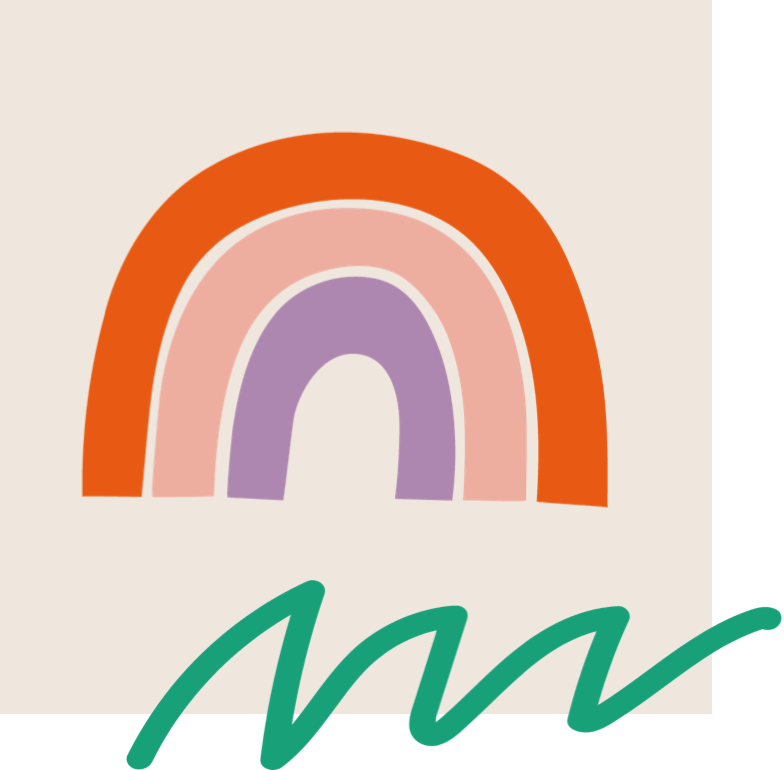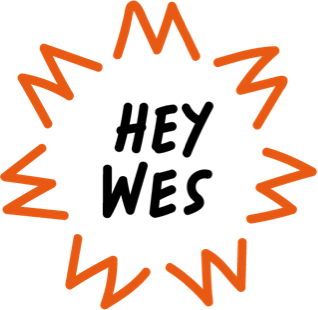Teaching Pronouns
January 2023
The pronouns we use about ourselves and others are important! Most people – cisgender, transgender, and nonbinary – care when others use incorrect gendered language about them.
Children learn how to use pronouns through the language that is modeled around them, and more explicitly through classroom instruction and speech-language therapy. Let’s explore, together, how we can shift our practices from a gender binary teaching approach to a gender inclusive one, so that people of all gender identities and gender expressions know they belong in our communities, and so the people we’re teaching know how to respect gender diversity.
Here are 6 tips to get you started on teaching pronouns in a way that honors and respects all experiences of gender:

1. Share Pronouns
It’s time to build a new habit. When you’re teaching pronouns, it’s instrumental that you begin by sharing and explicitly naming your own pronouns. This helps learners understand their target, and it begins to subtly break down the expectation that we should be able to look at someone and know what words to use for them. Truth is, we can’t always look at someone and know their words.
While sharing your pronouns in this context might feel new and out of your comfort zone, it is an essential piece in cultivating cultural responsiveness and belonging.
Here’s how you can share:
- Hey, my name is Wes and my pronouns are he/him
- Hi, I’m Wes, he/him
- My pronouns are he/him
- My words are he/him
- . . . those are the words you can use when you talk about me – my name, Wes, and my pronouns, he/him/his
- Watch an example
You may also want to have your pronouns displayed in writing somewhere in your room, workspace, or on your work badge.
After you model sharing your pronouns, you can invite others to practice sharing theirs, if they’d like. It should never be required for someone to share their pronouns, but there should always be opportunities for them to practice. This is a skill that will become second nature to your learners as they grow up in a generation that is increasingly acknowledging the depth and nuance of gender.
In addition to sharing your pronouns and providing opportunities for others to share theirs, you’ll want to get in the habit of sharing the pronouns of anyone you’re presenting to your learner (e.g., in materials or toys) who you want your learner to use accurate pronouns for. You need to help your learner establish the correct set of pronouns by explicitly naming them. Maybe you have a picture card, lego person, or doll – you can say, “This is Noa. Noa’s pronouns are she/her/hers. When we talk about Noa, we can use her name (Noa) or her pronouns (she/her/hers). She is wearing her shirt inside out.”
2. Ask for Pronouns
It’s okay, and even encouraged, to adopt a practice of asking people what their pronouns are. In full transparency, I used to feel kind of offended when someone would ask me this, so if that’s you, I get it. But hear me out: It can feel insulting to be asked what our pronouns are because we want, so badly, for people to be able to see us without needing to explain ourselves. Wanting to be seen is an innate human condition, but believing that people can see us just by looking at us is a false message we’ve been taught by the gender binary. There is immense privilege when someone looks at you and assumes your pronouns accurately. This is precisely why it’s so important that we ask this question, and that we ask it to everyone, not just people who we think (or know) are LGBTQ+. But, please, keep this in mind: Before you or your learner asks someone what their pronouns are, make sure that the person who is doing the asking has shared their pronouns first.
Here’s how you can ask:
- What are your pronouns?
- What are your words?
- What pronouns should I use for you today?
- . . . most people use he or she or they, but there are other options too. Which words should I use about you?
- Watch an example
Even though it’s appropriate and encouraged to ask someone what their pronouns are, no one should ever be required to disclose. There are several reasons why someone might not want to make a declarative statement about their pronouns, so it’s best to frame this as an open-ended invitation that is regularly revisited.
Sometimes, when I ask my learners this question, they have an answer for me right away and sometimes they don’t have an answer for me at all. For those of you worried about someone not being able to answer this question, here’s my advice: Still ask. Make sure your learner has access to the language they might need, that they are presented with options, and that if they don’t know or don’t answer, you respond in a way that communicates it’s okay. It is not our job to teach someone what their pronouns are. Our job is to teach our learners how to use people’s pronouns correctly, but each person gets to tell us what their pronouns are.
Think about it this way: You wouldn’t ever meet someone new and just make a guess and assumption about their name – you ask, “What’s your name?” The same rule applies here. When we don’t know someone’s name, we ask, “What’s your name?” When we don’t know someone’s pronouns, we ask, “What are your pronouns?” or “What are your words?” In order to ensure you are maintaining confidentiality and safety, you may need to ask follow-up questions like, “Who can I use that name/pronoun with?” For an example of how to do this, see Teaching Outside the Binary’s Get To Know You Sheet 2.0.

The big takeaway from tips 1 & 2: We need to explicitly establish someone’s pronouns before expecting our learners to use a person’s pronouns correctly. This is because we can’t accurately assume and know someone’s words just by looking at them.
3. Teach Singular They/Them
In order to teach pronouns in an inclusive way we need to incorporate singular they/them and make space for other sets of pronouns beyond the binary he/him and she/her. We, of course, continue to teach plural they too.
They/them pronouns can be used in the following ways, and more:
- To refer to more than one person
- When a person’s pronouns are unknown
- When a person’s pronouns are they/them
- When a person’s pronouns are she/they, he/they, any pronouns, or other variations or combinations of pronouns that include they/them/theirs
If it feels new and hard for you to use they/them pronouns about an individual, you might be getting stuck on the gender binary rather than grammar. Let me give you an example of why using singular they/them pronouns is something you’re probably more comfortable with than you realize. Let’s say you’re at work and you see a student’s jacket on the playground after recess. You have no idea who it belongs to so you pick it up and go to the office. You say, “Someone left their jacket on the playground. If they come looking for it let them know I have it.” See how natural and easy that was? You got this. Note: Singular they is conjugated the same as plural they.
The more you practice singular they the easier it gets (I promise), and it’s an absolute must to include when teaching pronouns. Only teaching they/them in the plural form is both linguistically and culturally outdated. Teaching singular they/them pronouns is one significant way you can create more equitable, culturally responsive, and caring communities for people of all genders.
4. Use Real People in Your Learner’s Life
 One way to make teaching pronouns extremely functional and generalizable is to work on using pronouns accurately for real people in your learner’s life. This could be their peers, relatives, teachers, pets, or even their favorite superheroes or celebrities. Make sure to practice sharing and asking to explicitly establish the correct set or sets of pronouns for the person before working on the skill.
One way to make teaching pronouns extremely functional and generalizable is to work on using pronouns accurately for real people in your learner’s life. This could be their peers, relatives, teachers, pets, or even their favorite superheroes or celebrities. Make sure to practice sharing and asking to explicitly establish the correct set or sets of pronouns for the person before working on the skill.
For this exercise you can use people in the room, pictures, drawings, books, magazine cutouts, puppets, and more. Get creative and have fun! I once used this strategy with a preschooler who loved Paw Patrol. We got a coloring page with multiple Paw Patrol characters on it and added the names and pronouns of each character beside them on the page. There was one character on the page that neither of us knew. After discovering that we didn’t know this characters name or pronouns, we practiced using they/them when referring to this character. Since they/them pronouns can be inclusive of all genders we can use them when we haven’t had an opportunity to learn someone’s pronouns yet. This was such a natural way to incorporate more inclusive and culturally responsive practices where all gender identities belong.
5. Openly Navigate Mistakes and Misgendering
Everyone makes mistakes and uses the wrong pronouns sometimes. If you are an educator or SLP, you are likely teaching pronouns to people who are pretty regularly using pronouns incorrectly or are still learning all of the rules about them – What an optimal time to help them acquire language skills that will make them successful communicators in our diverse world.
Mistakes are a natural part of learning. Let’s normalize this by giving our learners the tools they need to navigate the aftermath of using the wrong words. We all know how frustrating and defeating it can feel to get something wrong, but we can empower our learners by teaching them what to do when someone corrects them, or when they catch themselves or someone else using the wrong pronouns.
Let’s go over the basics of navigating misgendering:
- When you catch yourself misgendering someone correct yourself in the moment and move on (avoid making a big apology, as this puts the person who was misgendered in a position to comfort you by telling you it’s okay, when that’s not what this is about – it’s about recommitting to getting it right and showing your dedication to seeing them)
- When someone corrects you say “thank you” and then use the correct pronouns in the next thing you say
- When you witness someone else misgender someone you can respond by using the person’s affirming pronouns and, when appropriate, reminding them what the correct pronouns are (please be mindful here to not unintentionally out someone)
These practices are rooted in respect, coming together, being in community with one another, and seeing each other more fully.
6. Challenge Gender Stereotypes
Dismantling gender stereotypes is an integral practice in teaching pronouns in a way that makes room for people of all genders to show up, be themselves, and be respected. There are infinite ways to look like a he/him, she/her, or they/them. Boys, girls, and nonbinary people have diverse experiences and expressions, and it’s important we teach this to our children. They need to know that long hair isn’t only for girls, and short hair for boys. That girls aren’t the only ones who can like pink, and anyone’s favorite color can be blue. Anyone can wear a dress or a skirt, just like anyone can wear shorts or pants, and people should have the freedom to wear the types of clothes that make them feel like themselves.
We live in diverse communities where the assumptions we were taught to make about gender are not always true. We can’t always look at someone and know the correct words to use about them, and this lesson lies at the heart of the work we need to do when teaching pronouns. We get to teach our learners that sometimes a person’s words are he/him when your learner thinks he looks like a she/her, and that sometimes a person’s words are he/him even though he has long hair and wears nail polish and skirts.
When you receive a comment from a learner that demonstrates they believe a gender stereotype (e.g., “Only boys have short hair.”), you get to enter into this beautiful teaching moment with them (“People of all genders can have short hair. Short hair is for anyone who wants or needs short hair. We can’t know what someone’s gender is just by looking at them. Let’s think about people we know, or look people up on the computer, to see examples of all different kinds of people that have short hair.”).
It can be fun and empowering to broaden the visual representation of what a he, she, they, or person using any set of pronouns can look like, act like, or sound like. Diversity in gender identities and gender expressions is beautiful and natural. You won’t cause confusion when approaching pronouns through an inclusion lens so long as you remind children that they know who they are, that their gender is inside of them, that no one can take anyone’s gender away from them, and that their gender is valid and real and beautiful.
